NCERT Solutions Class 7 Maths Chapter 14 Symmetry
The NCERT Solutions for Class 7 maths Chapter 14 Symmetry explains the concept of symmetry that is almost everywhere in our surroundings, in nature, and in real-life scenarios as well. Symmetric patterns are seen throughout nature, such as the growth and development of living organisms, flowers, trees, and leaves, as well as many other natural occurrences.
Symmetry can also be created in architecture, as well as art and music. Similarly, mathematics is also governed by certain symmetries or patterns that repeat themselves over and over again. These NCERT solutions Class 7 maths Chapter 14
starts with recalling the concept of line symmetry that means a line, over which if the figure is folded, its parts will coincide. This line of symmetry is also known as the axis.
The chapter talks about the symmetry of regular polygons. The students will discover interesting facts about them, including that the regular polygons have multiple lines of symmetry. More such facts can be read in the Class 7 maths NCERT solutions Class 7 maths Chapter 14 Symmetry, which is given below and also find some of these in the exercises given below.
- NCERT Solutions Class 7 Maths Chapter 14 Ex 14.1
- NCERT Solutions Class 7 Maths Chapter 14 Ex 14.2
- NCERT Solutions Class 7 Maths Chapter 14 Ex 14.3
NCERT Solutions for Class 7 Maths Chapter 14 PDF
Symmetrical shapes are pleasing to the eye and convey qualities of balance and order. No wonder that a symmetrical shape such as a square or rectangle is often used as the basis for architectural design, hence making it an important concept for the students to study. The pdf file of the NCERT solutions Class 7 maths Chapter 14 representing various sections can be downloaded from the links below:
☛ Download Class 7 Maths NCERT Solutions Chapter 14 Symmetry
NCERT Class 7 Maths Chapter 14

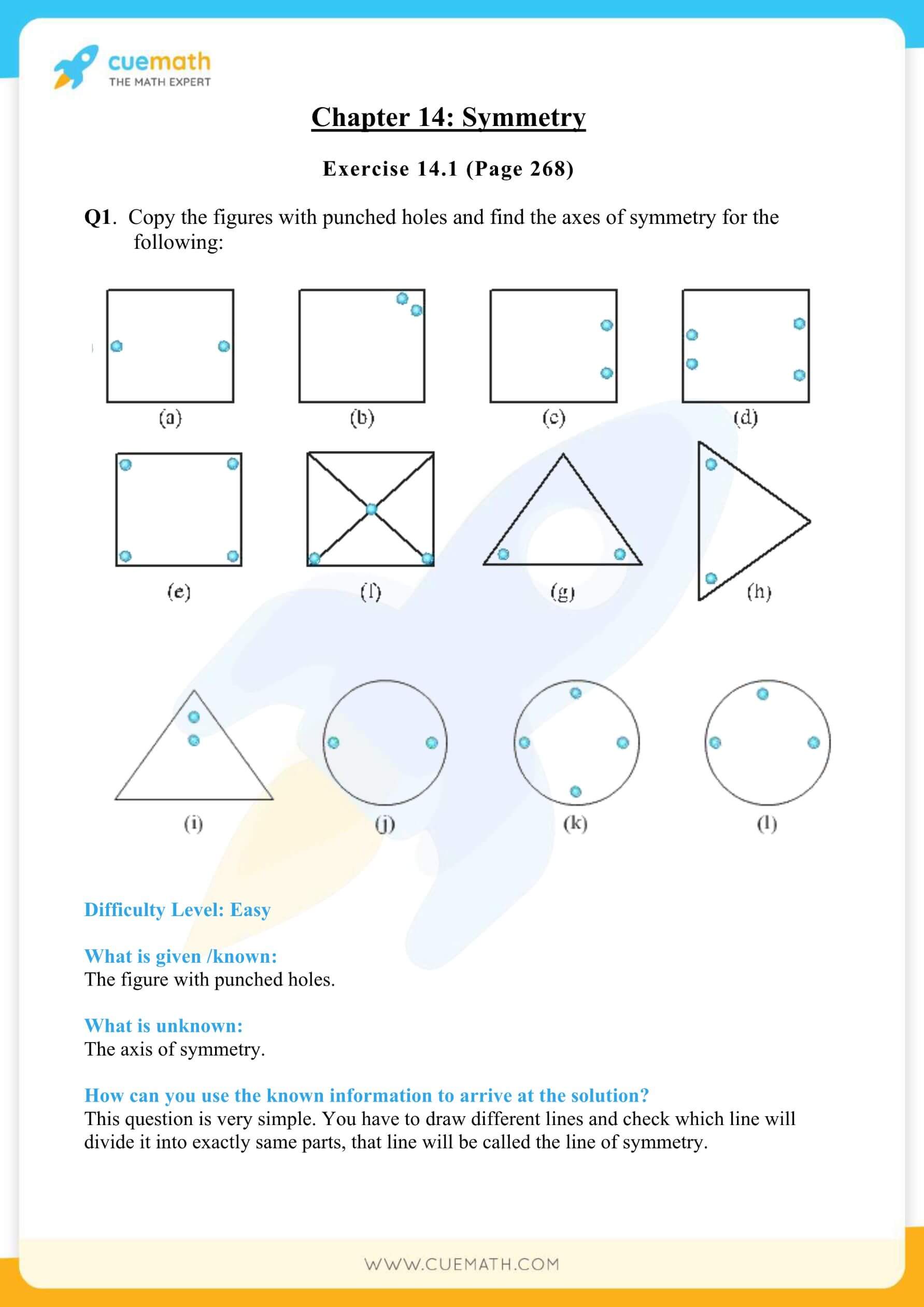
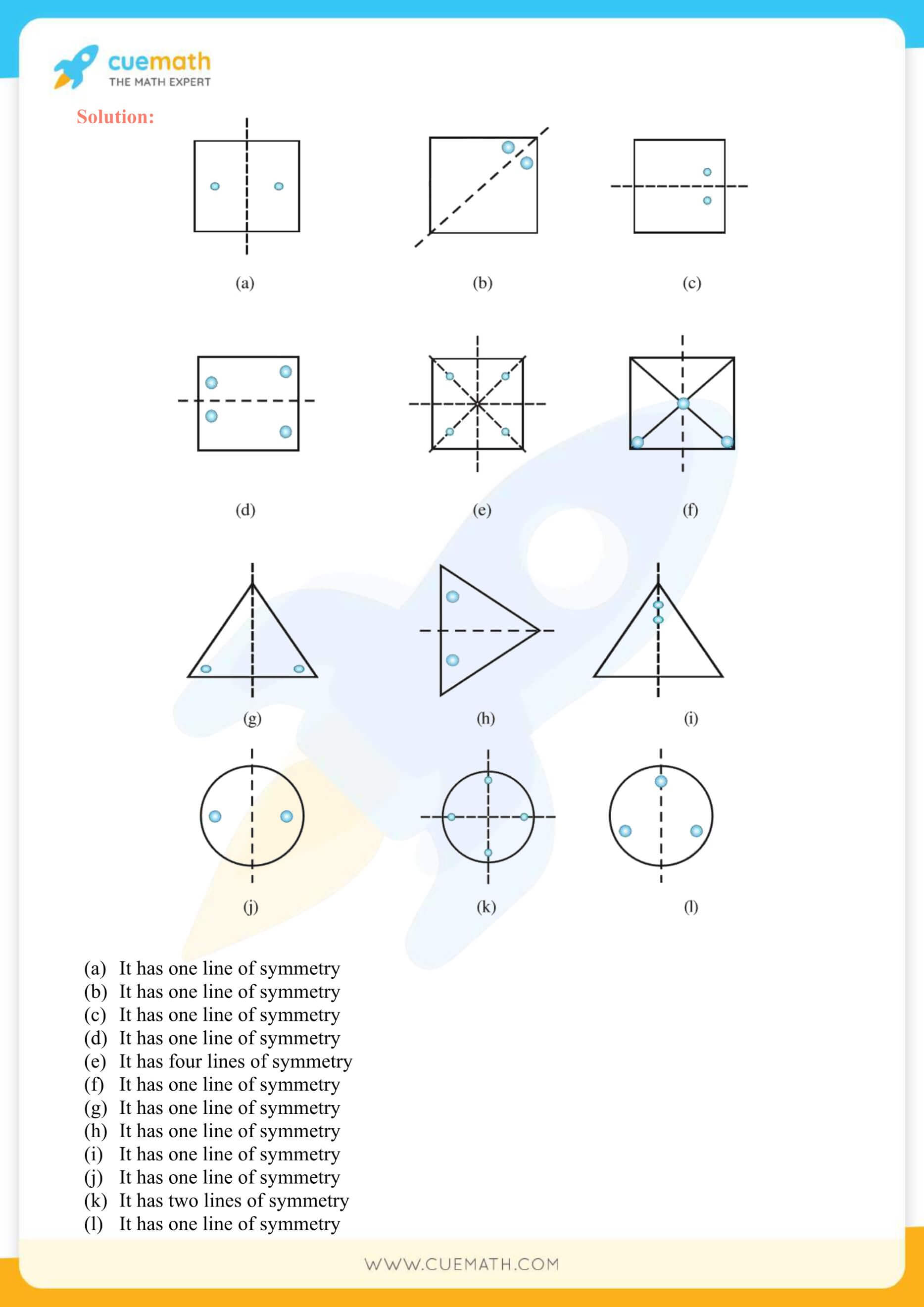
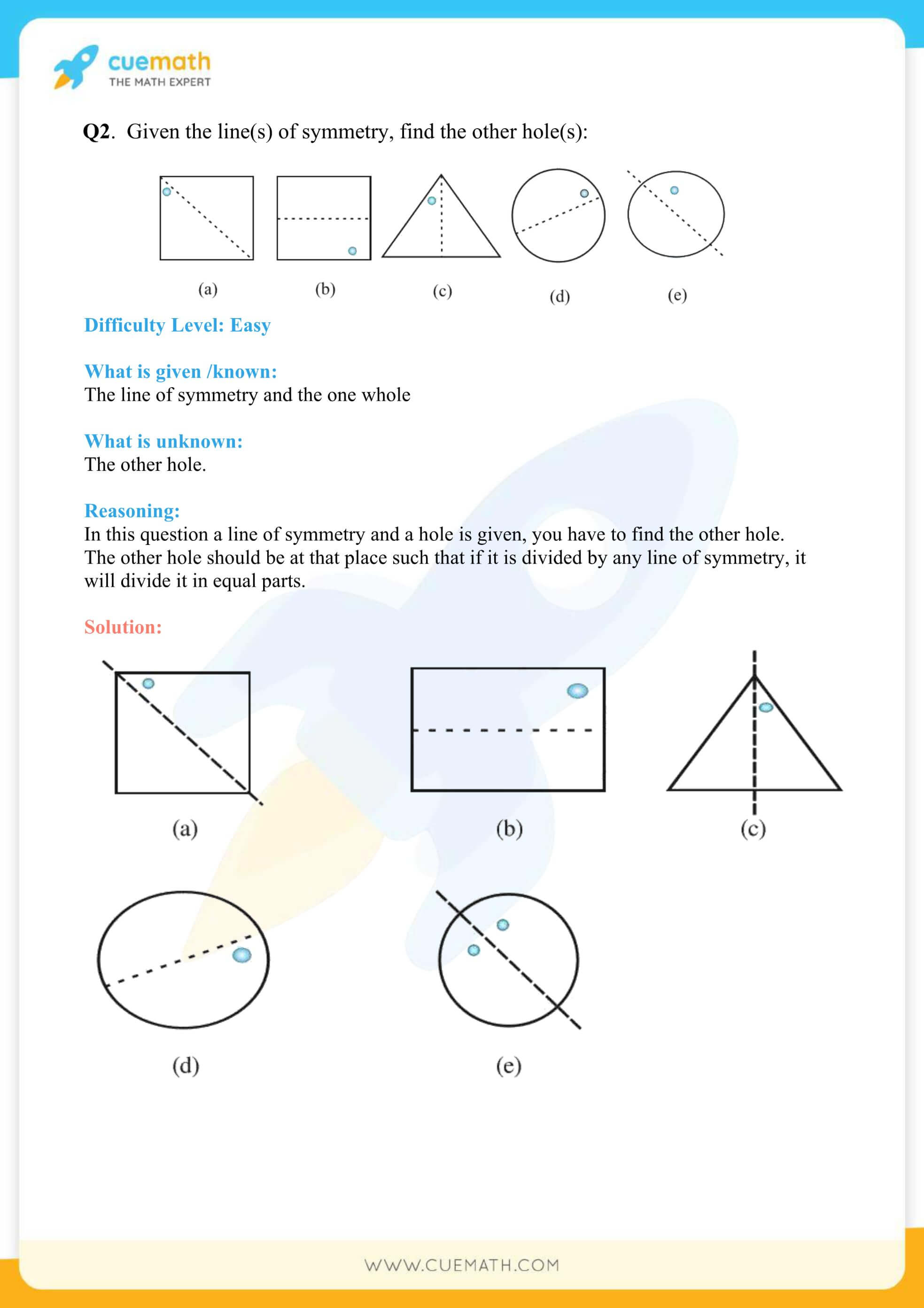
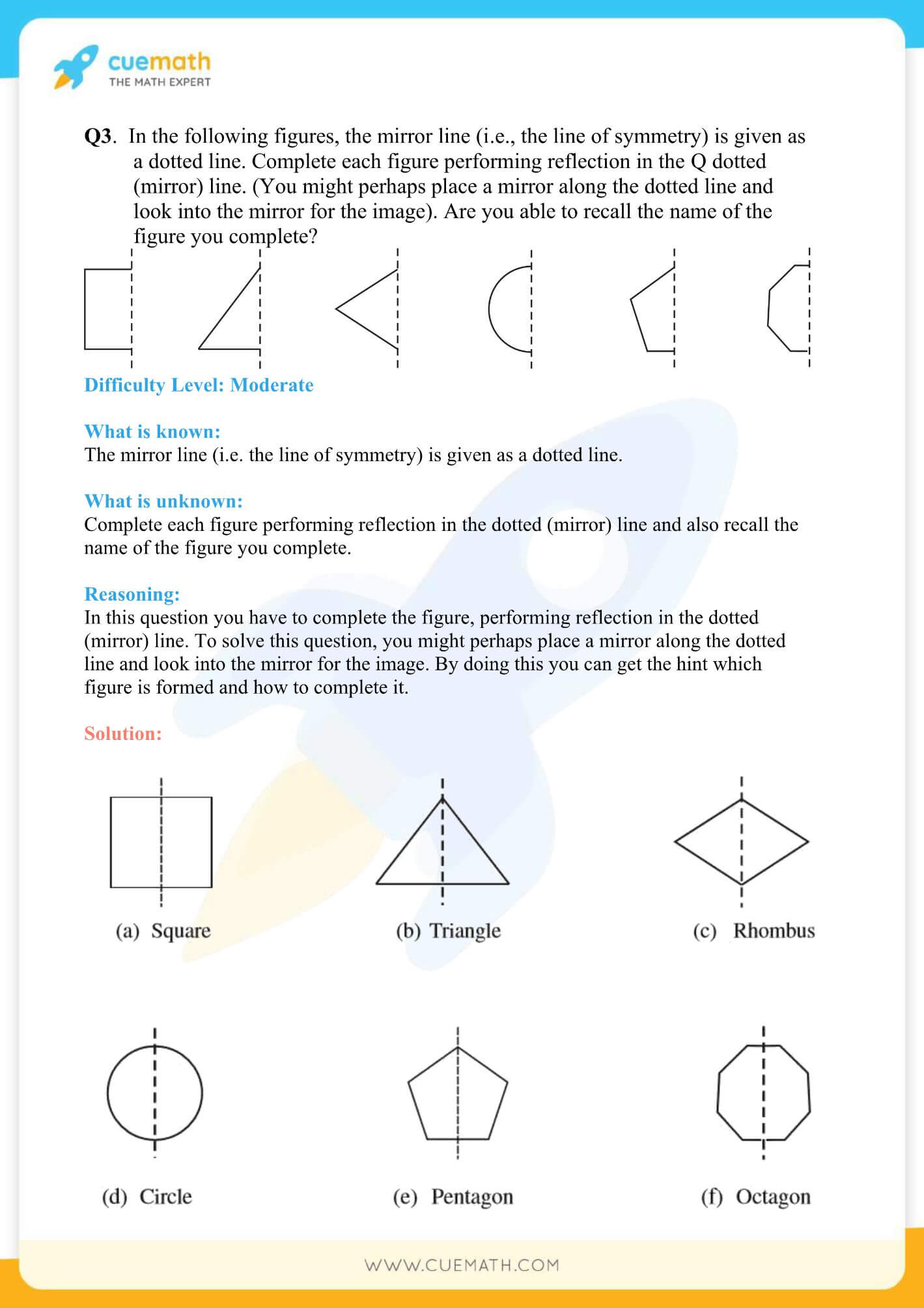
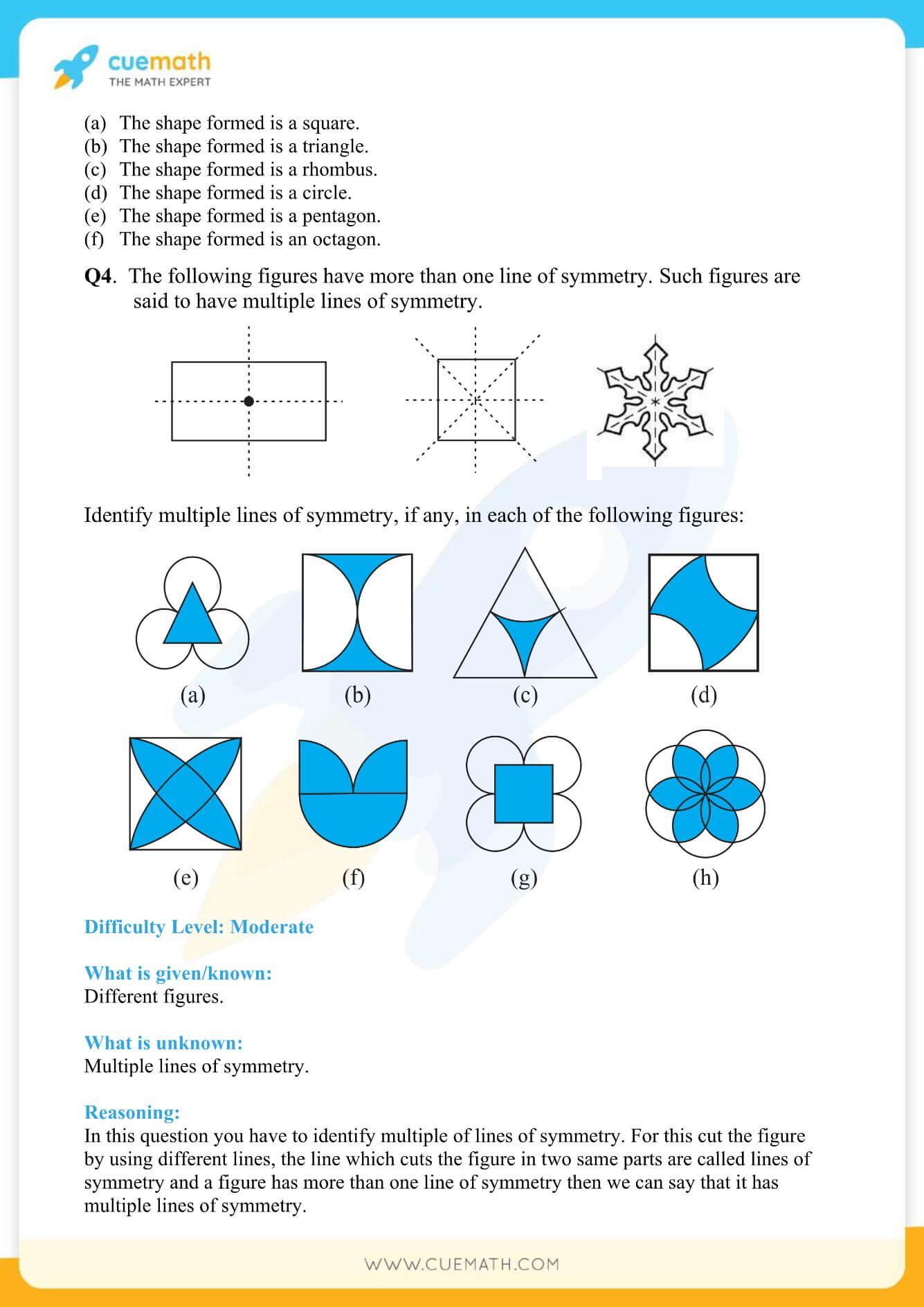
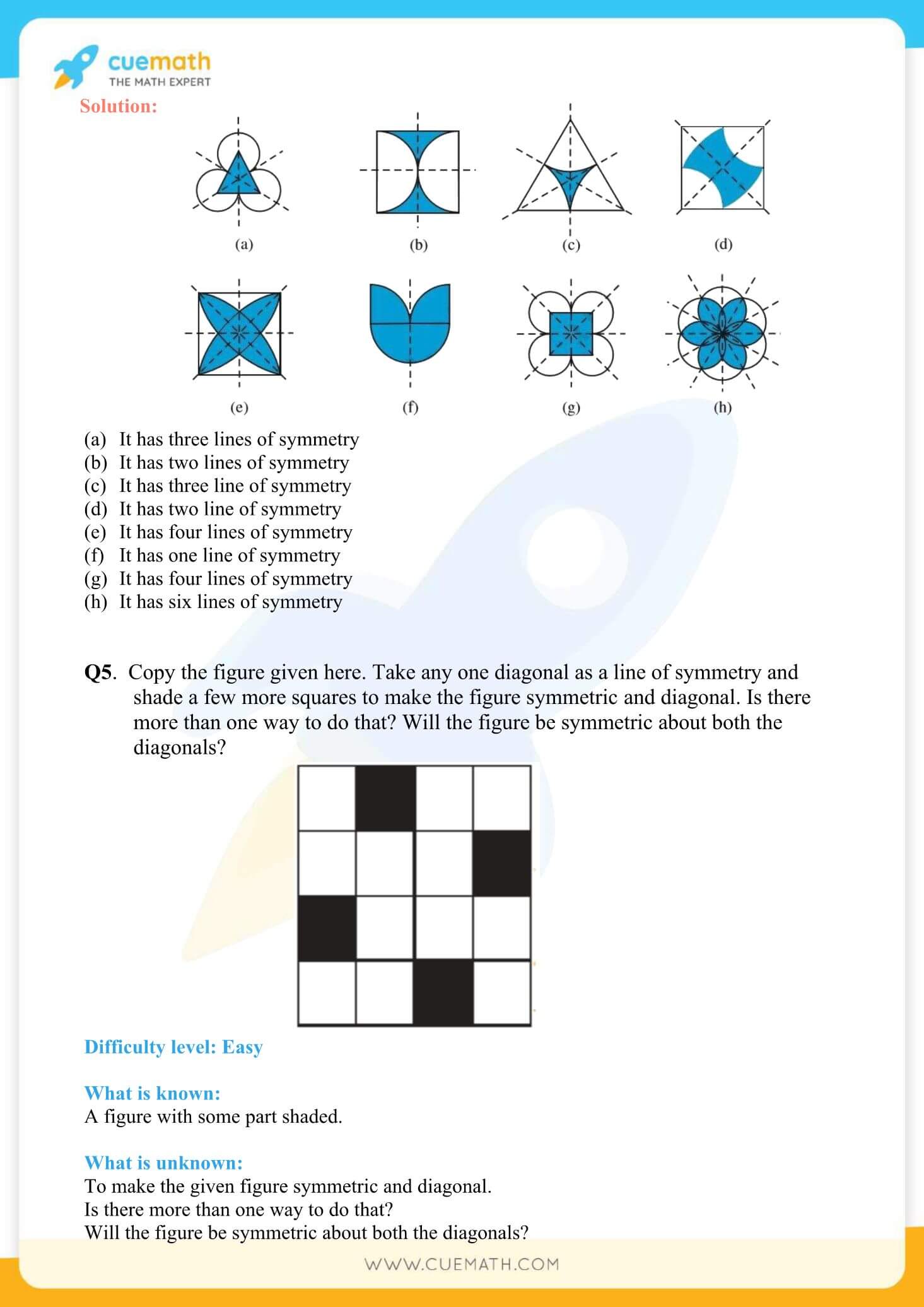
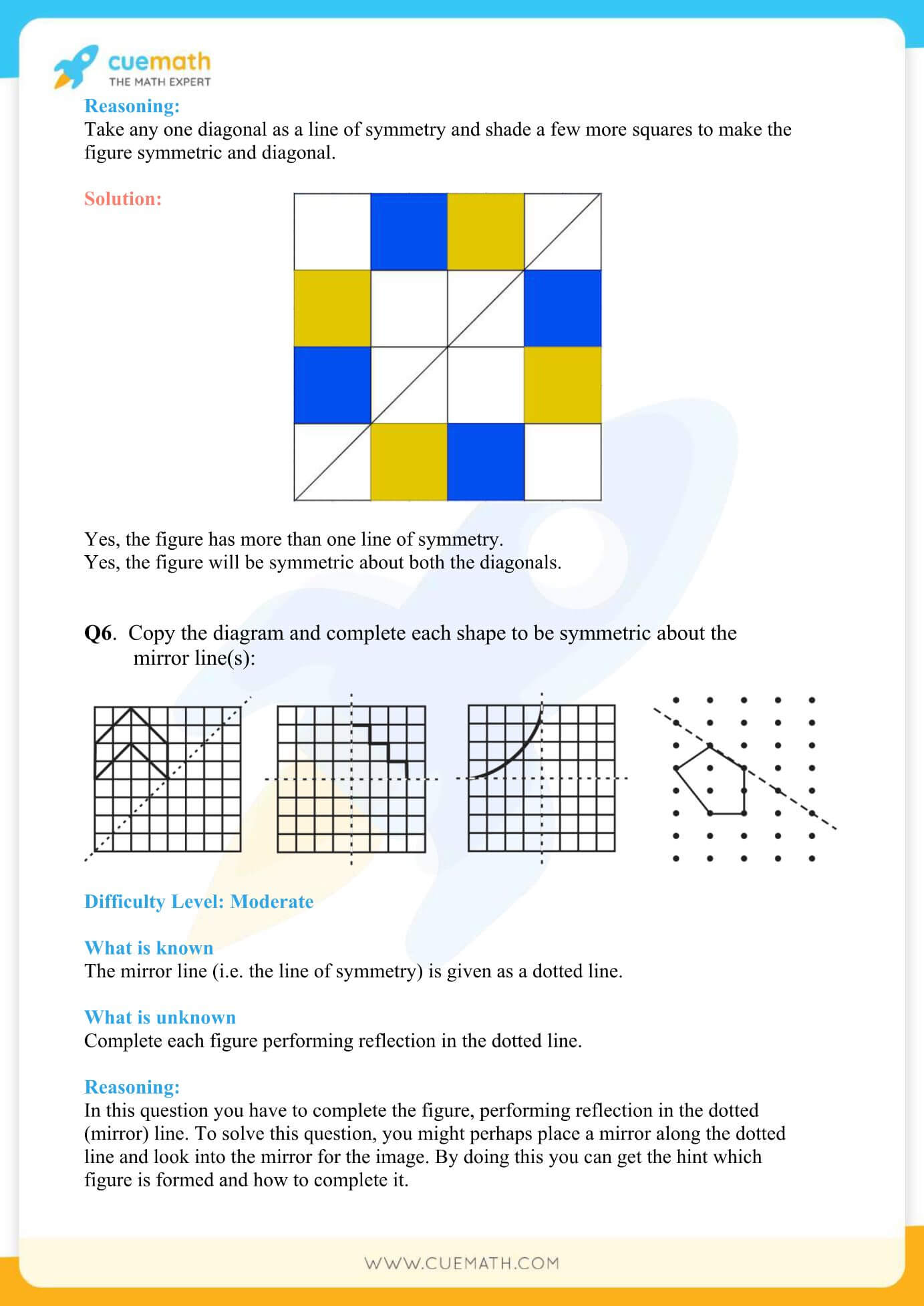
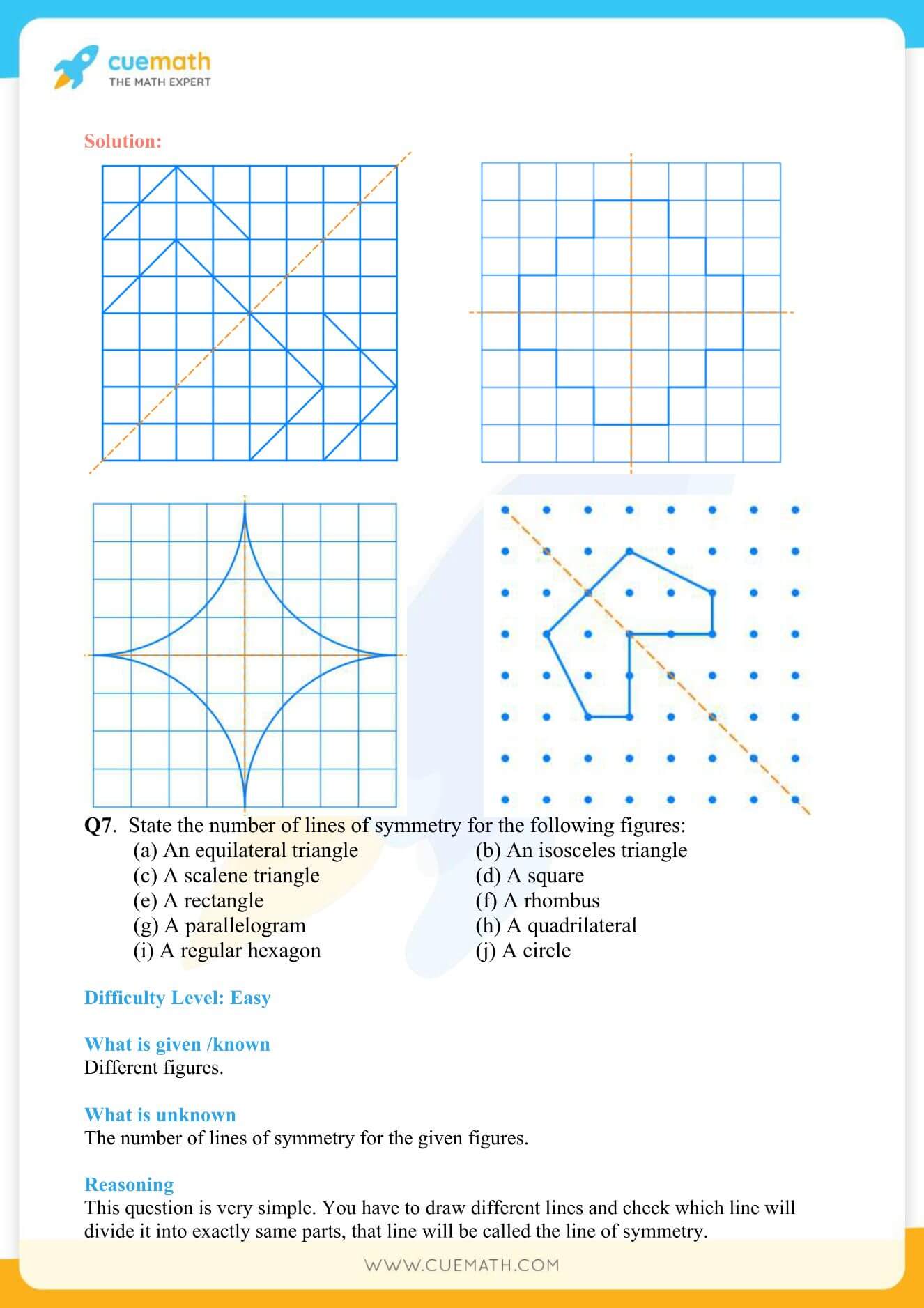
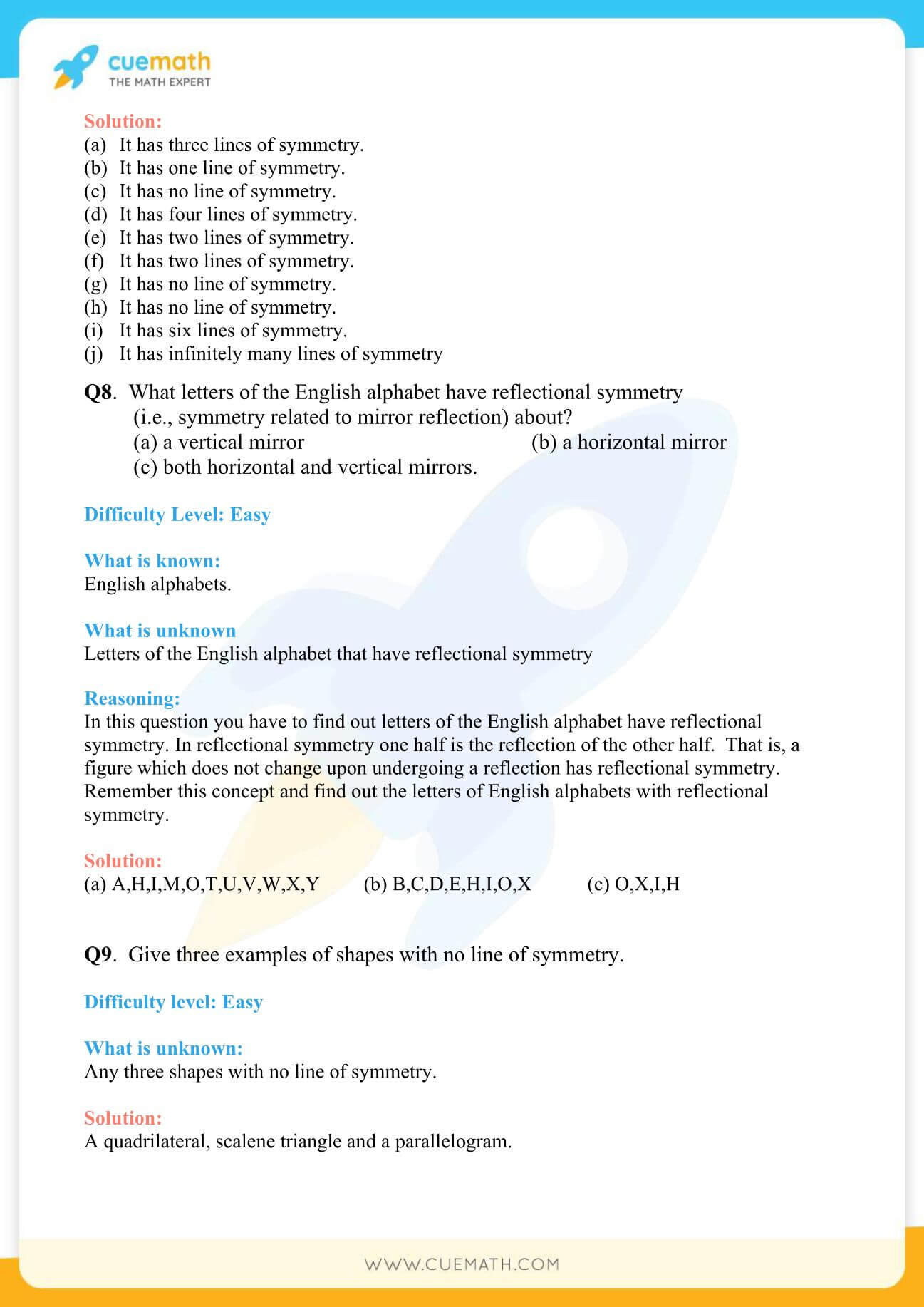
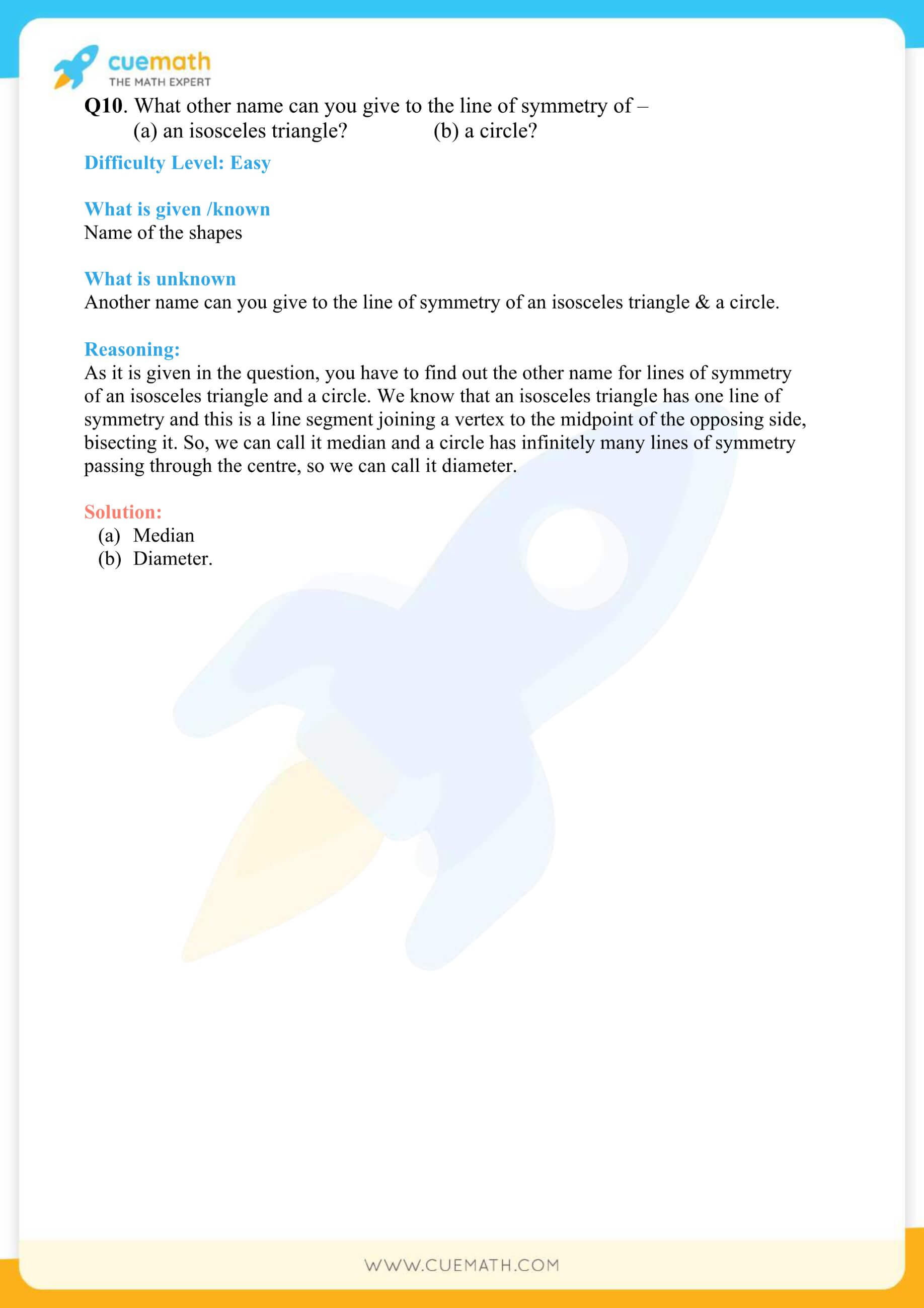
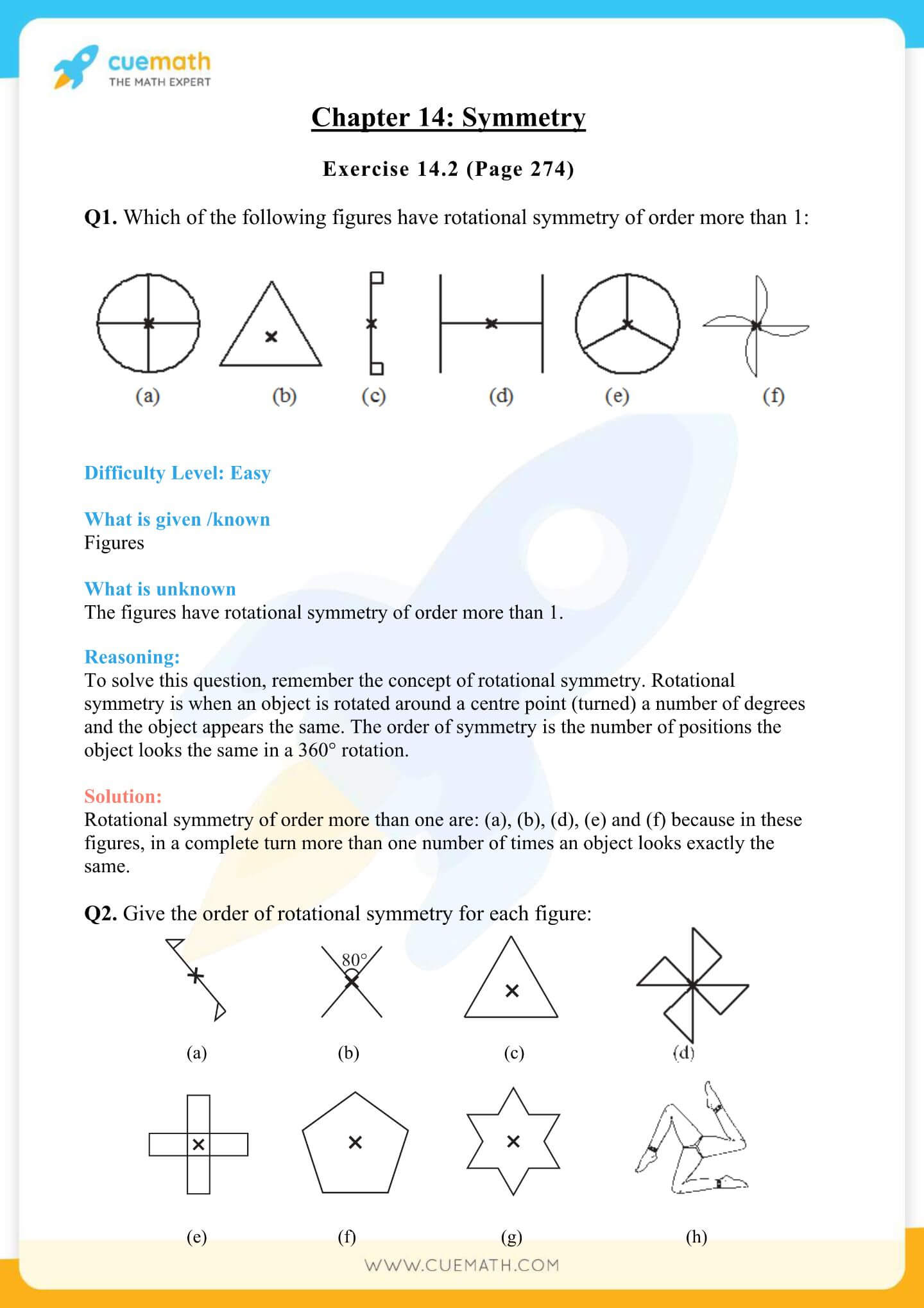
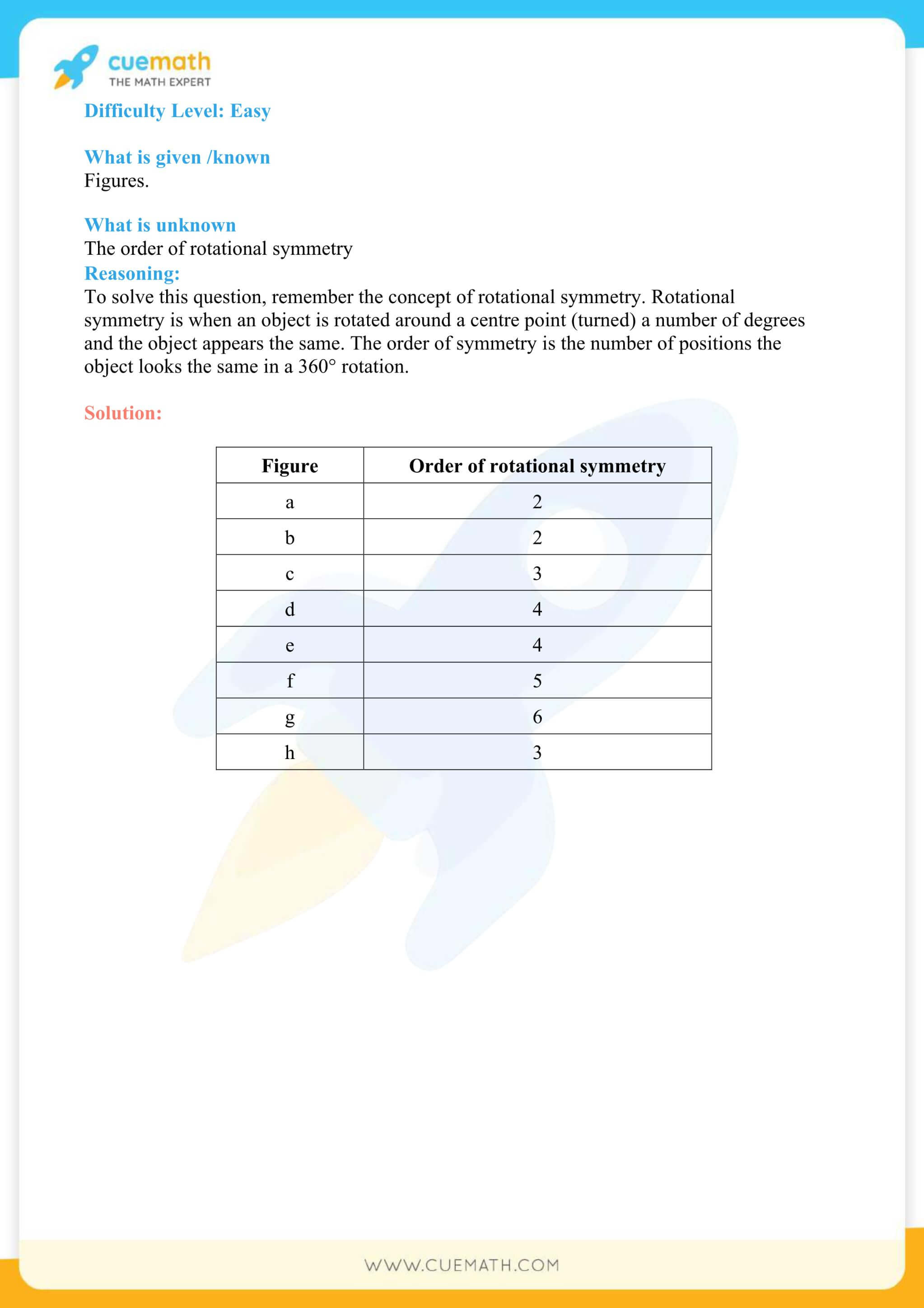
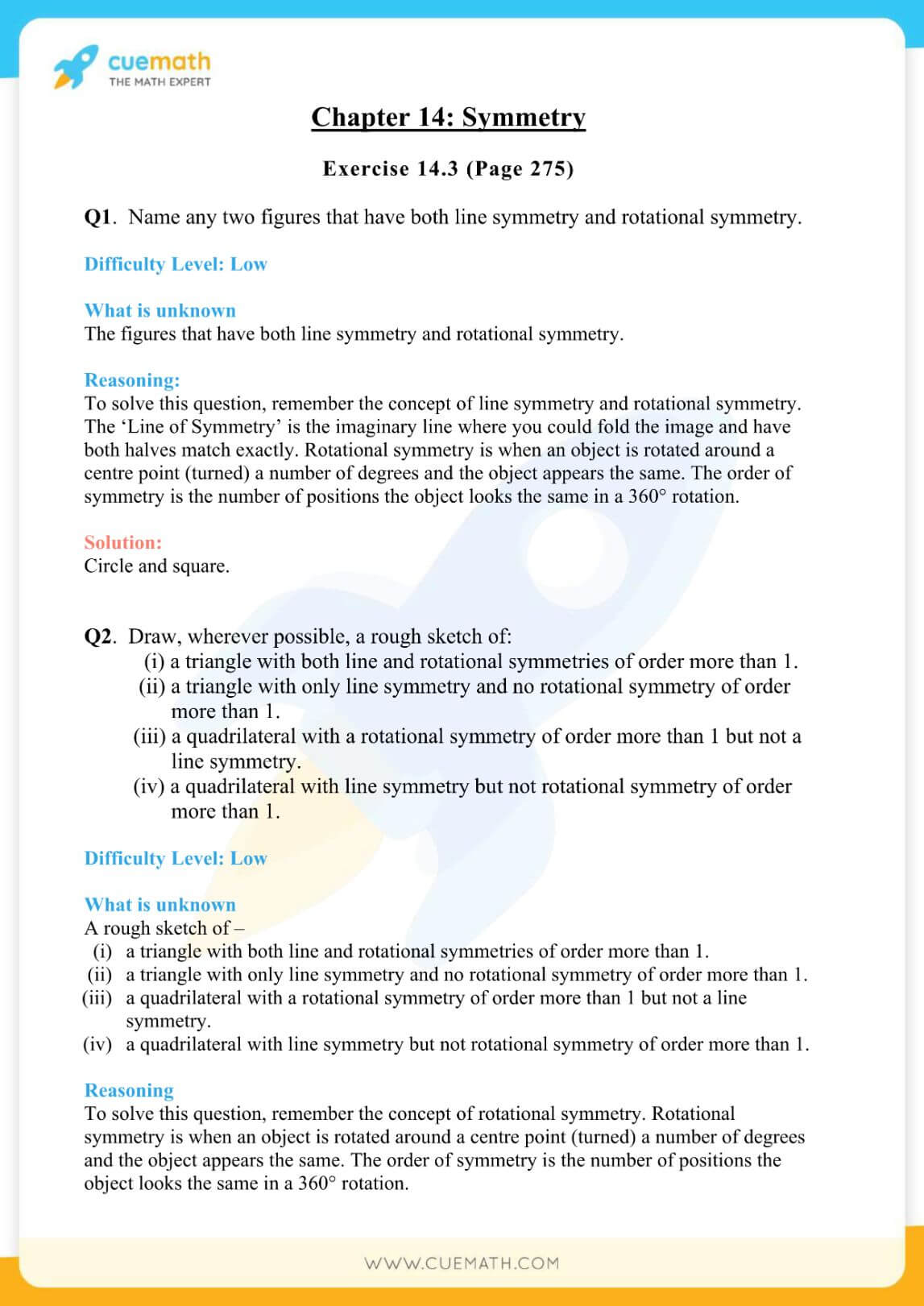
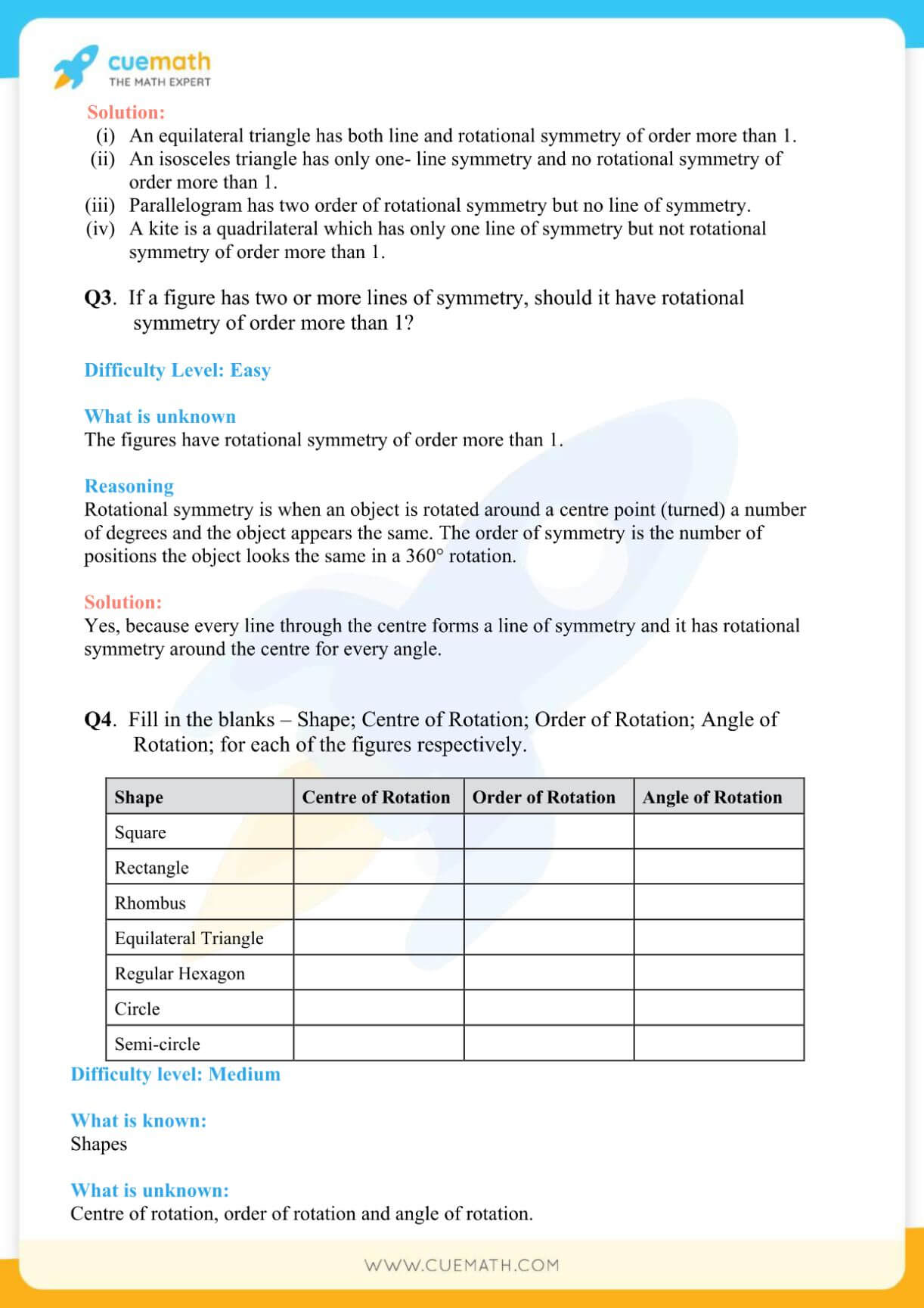
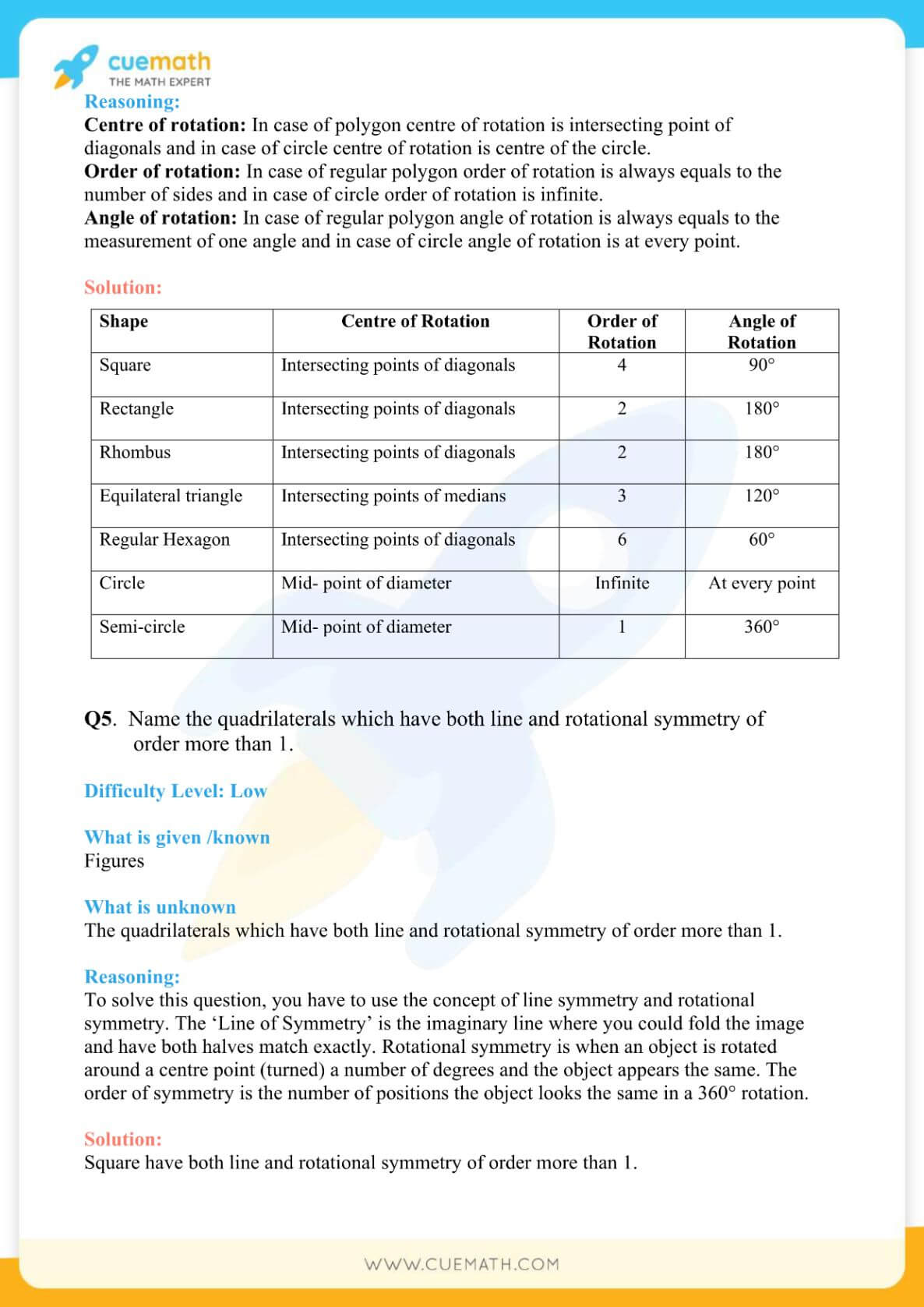
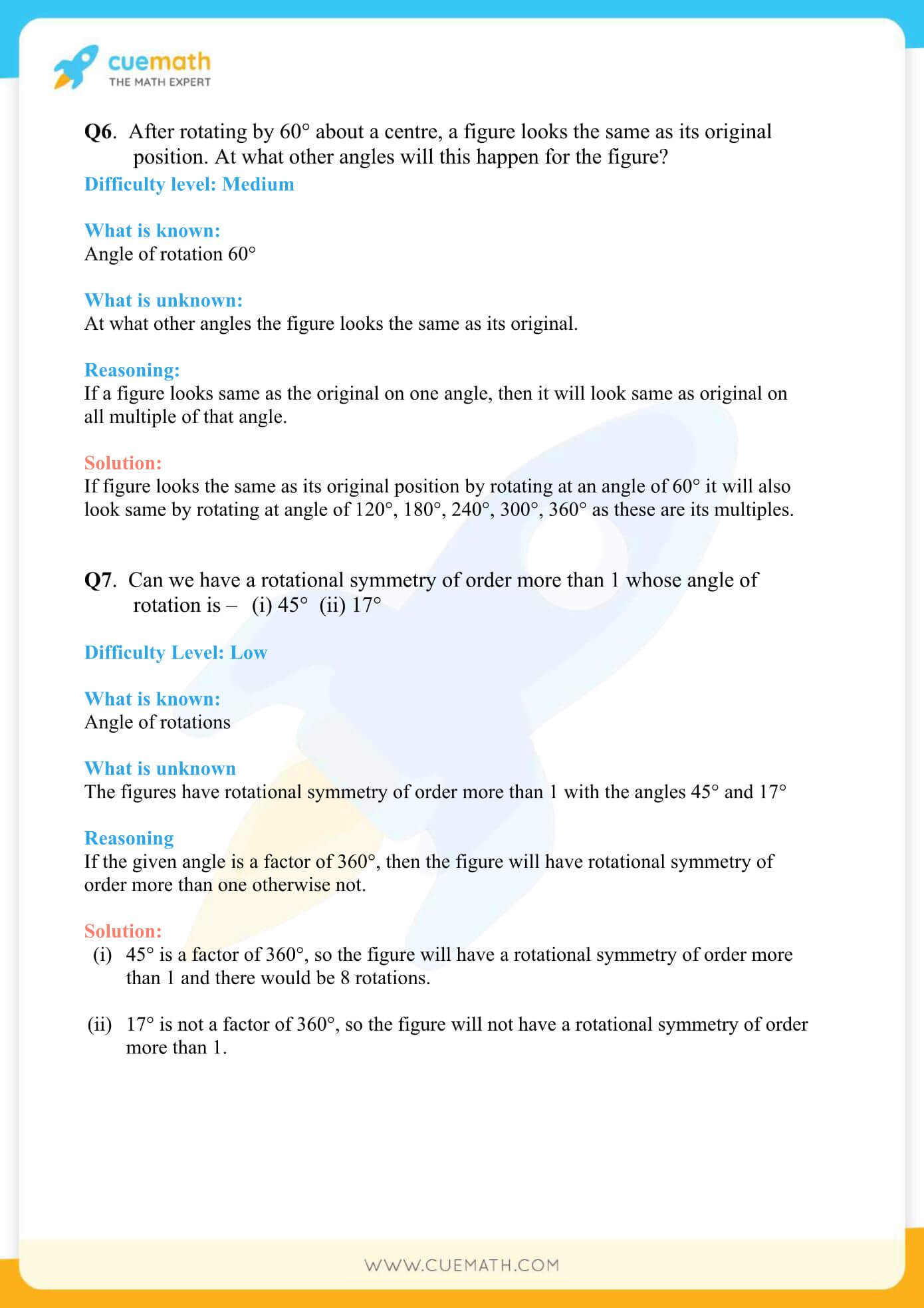
NCERT Solutions for Class 7 Maths Chapter 14 Symmetry
Symmetry is one of the distinguishing features of life - it is one of the fundamental properties that give rise to a wide variety of phenomena, from fractals to crystals and hurricanes. It doesn't matter what field you're in: you'll find symmetries everywhere, from the mechanics of waves and turbulence to the economic theories behind monetary systems.
For these reasons, learning about symmetry is an absolute must for anyone interested in science or engineering. Hence, the students must make use of the NCERT Solutions Class 7 Maths Chapter 14 Symmetry, the section-wise exercise classification of which is given below:
- Class 7 Maths Chapter 14 Ex 14.1 - 10 Questions
- Class 7 Maths Chapter 14 Ex 14.2 - 2 Questions
- Class 7 Maths Chapter 14 Ex 14.3 - 7 Questions
☛ Download Class 7 Maths Chapter 14 NCERT Book
Topics Covered: Line and Rotational symmetry, order of rotational symmetry, symmetry of regular polygons, terms like the center of rotation, angle of rotation, also, the two kinds of rotation like clockwise and anticlockwise have been covered in detail in the Class 7 maths NCERT solutions Chapter 14.
Total Questions: Class 7 Maths Chapter 14 Symmetry Chapter 14 has 19 questions in all, 12 of which are very easy, 4 involve drawing the figures in order to complete their symmetry, while the rest 3 can be classified as moderately difficult.
List of Formulas in NCERT Solutions Class 7 Maths Chapter 14
The concept of symmetry entails certain criteria to be fulfilled in order for a figure to be called symmetrical. The students need to have dedicated observational skills and focus, in order to analyze and categorize the given figure as symmetrical while applying the knowledge of these rules. Hence, these criteria or logics are important to remember. Some of them are given below.
- Lines of symmetry of Regular Polygon: A regular polygon’s lines of symmetry are as many as the number of its sides.
- Order of Rotational Symmetry: When an object takes a complete 360-degree turn, the number of times it looks the same is called the order of rotational symmetry. For example, for a square, it will be 4, whereas for a triangle it will be 3.
Important Questions for Class 7 Maths NCERT Solutions Chapter 14
| CBSE Important Questions for Class 7 Maths Chapter 14 Exercise 14.1 |
|---|
| CBSE Important Questions for Class 7 Maths Chapter 14 Exercise 14.2 |
|---|
| CBSE Important Questions for Class 7 Maths Chapter 14 Exercise 14.3 |
|---|
NCERT Solutions for Class 7 Maths Video Chapter 14
| NCERT Class 7 Maths Videos for Chapter 14 | |
|---|---|
| Video Solutions for Class 7 Maths Exercise 14.1 | |
| Exercise 14.1 Question 1 | Exercise 14.1 Question 6 |
| Exercise 14.1 Question 2 | Exercise 14.1 Question 7 |
| Exercise 14.1 Question 3 | Exercise 14.1 Question 8 |
| Exercise 14.1 Question 4 | Exercise 14.1 Question 9 |
| Exercise 14.1 Question 5 | Exercise 14.1 Question 10 |
| Video Solutions for Class 7 Maths Exercise 14.2 | |
| Exercise 14.2 Question 1 | Exercise 14.2 Question 2 |
| Video Solutions for Class 7 Maths Exercise 14.3 | |
| Exercise 14.3 Question 1 | Exercise 14.3 Question 5 |
| Exercise 14.3 Question 2 | Exercise 14.3 Question 6 |
| Exercise 14.3 Question 3 | Exercise 14.3 Question 7 |
| Exercise 14.3 Question 4 | |
FAQs on NCERT Solutions Class 7 Maths Chapter 14
Why are NCERT Solutions Class 7 Maths Chapter 14 Important?
The NCERT Solutions Class 7 Maths Chapter 14 has all the details about the topic of symmetry in a comprehensive manner. All the related terms have been covered explicitly with the help of examples to make sure the students understand their practicality. The team at NCERT does full justice to all the concepts they wish to teach in an efficient manner. The solutions given to every problem are very accurate and explanatory making this a very important resource for the students.
Do I Need to Practice all Questions Provided in NCERT Solutions Class 7 Maths Symmetry?
The examples and the exercise questions in the NCERT books encompass all the concerned aspects of symmetry, solving which will result in a quick revision of the concepts which the students have read so far. Hence, it is essential that the students practice all the problems to explore these concepts further. While some problems require the students to draw diagrams as a clarification of the question, other problems will require the students to make use of their logical and analytical skills, which will be advantageous for them.
How Many Questions are there in Class 7 Maths NCERT Solutions Chapter 14 Symmetry?
The NCERT Solutions Class 7 Maths Chapter 14 Symmetry has summed up the knowledge of symmetry in 19 questions. The students will find 12 relatively easy to solve, 4 are moderately easy while 3 would require some logical thinking taking a longer time.
What are the Important Formulas in NCERT Solutions Class 7 Maths Chapter 14?
The topic of symmetry is based on the concept of balance which is central to the understanding of how things are ordered in time, space, and form. There are certain rules and logics related to symmetry, and if the object or figure follows these criteria, it can be termed symmetrical. Some of these criteria are as follows: A figure can be called symmetrical only if, when folded on its line of symmetry, both parts of its images coincide exactly. Also, if we take the case of regular polygons, which have equal sides, their lines of symmetry are as many in number as the number of sides that they possess.
How CBSE Students can utilize NCERT Solutions Class 7 Maths Chapter 14 effectively?
Since the CBSE board recommends studying from the NCERT Solutions Class 7 Maths Chapter 14 hence, students must make sure to practice all the solved examples in the book as well as the exercise questions. They should pay attention to how the statements are framed in the solved examples, which will give them an idea as to how a problem should be solved in the exams by presenting proper logic step by step. Thus, consistent practice will help the students utilize this important learning resource more effectively.
Why Should I Practice NCERT Solutions Class 7 Maths Symmetry Chapter 14?
The concept of symmetry has been very well explained in the NCERT Solutions Class 7 Maths Symmetry Chapter 14 in simple language through easy practical activities and examples. The expert scholars at NCERT have combined the chapter with relevant important facts and pointers, which are essential for the students to understand. The objectives have been properly explained in the proper sequence; hence, the students must make use of the knowledge presented in this chapter and practice the concepts to strengthen their foundation of geometry.
visual curriculum